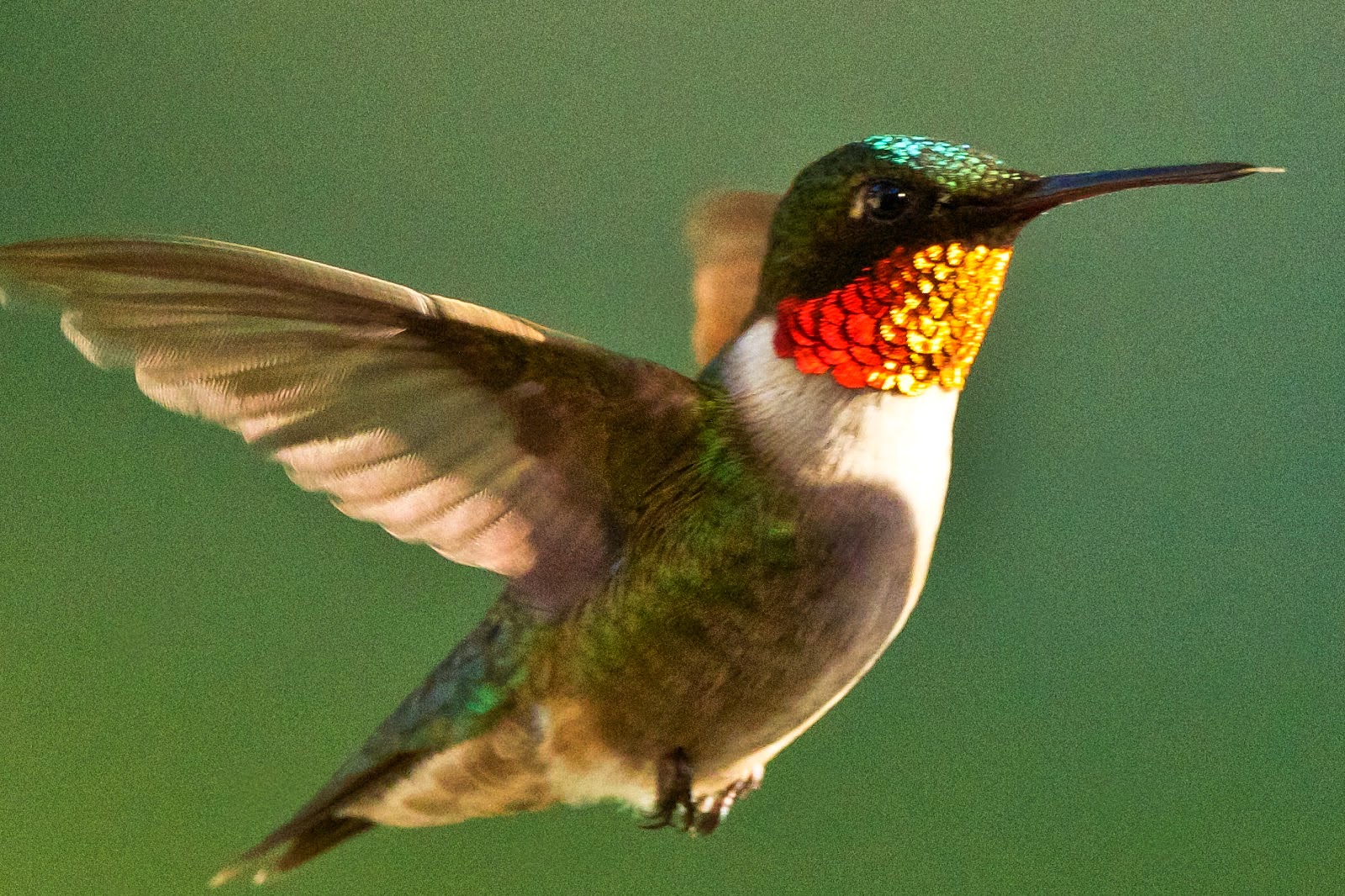As we were standing in our kitchen this morning, my husband mentioned that he had not seen any hummers lately. I realized that I hadn't seen any myself, we went to the window to look at our feeder and noticed the level was the same as shortly after the last fill not to mention the liquid was looking a bit cloudy. This made us both suspicious as all summer we were making food and filling the feeder at least a couple of times a week, in fact over the last several weeks we realized that the refilling time had increased.
This could only mean one thing "The Hummers Had Gone", you know it's a funny thing we've been feeding these marvelous little birds for years and every year they sneak up on us in May and leave us wondering what's going on during September. It just seems after all these years we'd be a little bit better prepared for their arrival and departure.
As we stood there talking about this we both wondered "When exactly do they migrate and where do they migrate to". Two other things you'd think we would be knowledgeable about after this amount of time feeding and enjoying them.
I kept thinking about these questions as I was going about the rest of my day (fun things like making the bed, cleaning up the kitchen, vacuuming etc.) being of an inquisitive nature I decided to do a little research on the subject. I discovered some interesting fact which I'd like to share, this info is going to be mainly about the Ruby-throated Hummingbirds as they are the most common to our area of the country.
So why do hummingbirds migrate - well there are several theories, one being the change in daylight hours another the decline of flowers and insect population. A hummingbird will gain 25-40% of their body weight before they start migration. If a larger bird gained that much weight, they would not be able to get off the ground.The need for extra weight is the fact that these incredible little birds migrate to South America via the Gulf of Mexico (wow, can you imagine), once over the water of course there is no where to land or feed, so they need all the energy they can muster.
Another interesting fact is that unlike birds that migrate in a flock (such as Canadian Geese) these little powerhouses are solitary, meaning they make this remarkable journey (twice a year) completely alone. One last bit of info I discovered was that older mature birds often start their migration earlier than juvenile birds. Younger birds take longer to build up their new strength and maturity before setting forth on the long migration journey.
Well even though it's once again time to say goodbye and we will really miss watching their entertaining antics every day, there is one thing that you can be sure of. In May 2015 we will no doubt get surprised once again by their arrival and of course scramble to get the feeder out - filled - and hung but we would not have it any other way.
Hurry back - We'll be waiting.






No comments:
Post a Comment